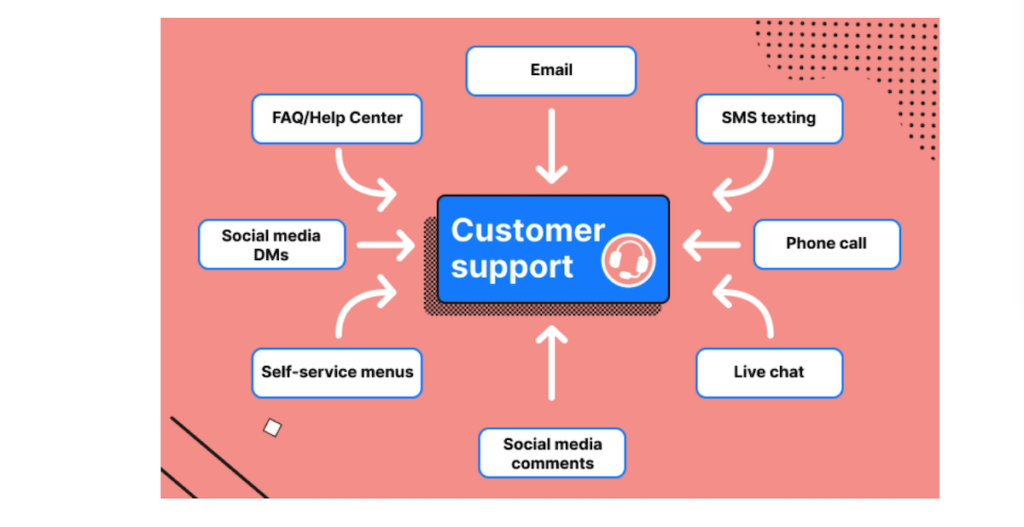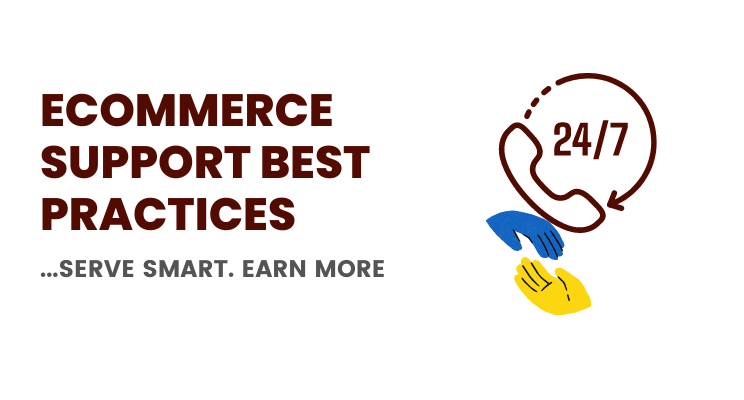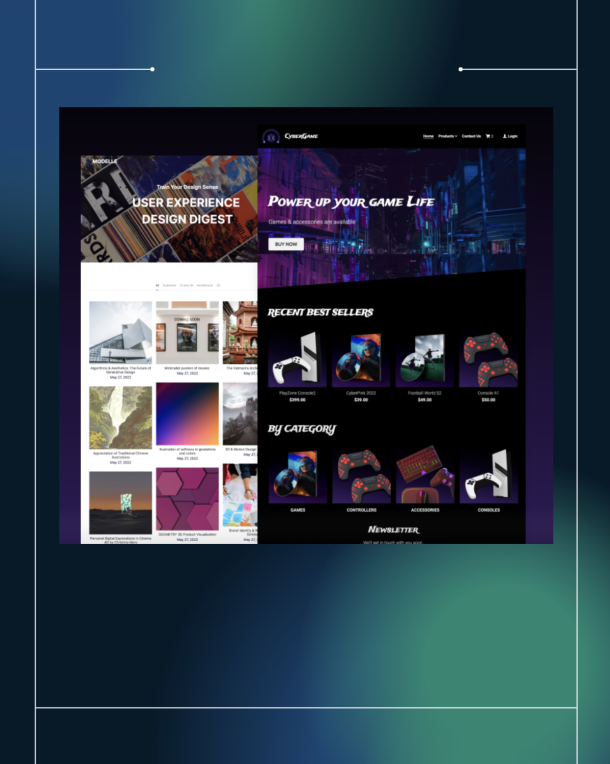You need smart eCommerce support best practices because if everything else remains the same between your competition and your brand, it’s how you do customer support that’ll make a difference in how your brand grows. It’ll be the single-most, defining, and profitable thing you’d do.
Brands make billions with customer support.
Note: Most of these tips are rather more specific to Shopify merchants using (or learning how to) use advanced customer support systems such as Gorgias. Depending on how your eCommerce business is setup and the platform it’s built on, you have several other customer support tools for eCommerce you could choose from.
Earlier, I wrote on how customer service is a profit centre for your business. In fact, if you had to choose one of the best customer retention strategies ever, the vote would go for customer support.
Here are some smart eCommerce support best practices you’ll do well to follow:
Brand, Tone, Style, Warmth
Remember the “corporate-style” nonsense businesses love to pull? No one likes that.
eCommerce brands are already faceless and soul-less. Don’t add fuel to the fire by also going without a specific tone of voice, brand style, and some “human” thing when getting in touch with customers (for whatever reason).
Brands adopt specific style and tone of voice to everything they do. You’ll see this in their regular communication, emails, eCommerce store, and little “thank you” notes they send with product packages or as a part of their service invoices.
Mailchimp, for instance, has a distinct voice. Shopify has another (note that this voice changes slightly for their Shopify Plus front).
Descript has a different style, while Rackspace as another vibe to it.
As how to how to find your brand style and tone? You got to figure that out for your own brand.
Go the Extra Mile
Elizabeth Wellington of HelpScout has a fantastic blog post on all sorts of examples of exceptional customer support.
Traders Joe went out of its own way (breaking its own policy) to serve an 89-year old, snowed-in man in Pennsylvania with food after his daughters’ frantic calls. Rackspace, on a marathon support call with a customer, overhears that the customer is hungry and orders pizza.
See what I am getting at? You don’t always have to deliver food by chartered choppers to snow-capped mountains.
But customer service is hard work.
Elizabeth listed 8 examples. I am sure, however, that there are many other brands that try to go that extra mile for their customers. I am not sure if it’s still a “thing” but American Express had a reputation to “do anything” for their premium charge card customers.
The Taj Mahal Hotel in Mumbai, India has a reputation to actually note down all kinds of specific requests their high-paying, high-flying, and demand customers have:
“Set up a toaster in my room. I like my toasts fresh in the morning”.
Or,
“Send in sugar-free coffee. Black”
Or,
“Cordon off this entire suite. Make decorations for Christmas. I want to throw a party”
These requests are noted for each customer so that they don’t have to ask again.
What are you willing to do?
All Channels, Merge Into One
Prospective customers can ask you pre-sale questions anywhere — from forms on your eCommerce store to an inbound phone call. On Twitter, Instagram, Facebook, LinkedIn, or a random sub-reddit you maintain on Reddit.

Some folks like to reach out to you by SMS. Some others reach out to you by email. Others just land on your eCommerce store and send in questions using the live chat window (if you have one).
Multiple channels of communication (and this doesn’t include actual walk-ins to your physical store locations).
All of those communications should lead to a single destination. Call them customer support dashboards, shared Inboxes, or whatever.
You get the point.
Self-Service eCommerce [+ Human Intervention]
As Jeff Bezos puts it:
“The best customer service is if the customer doesn’t need to call you, doesn’t need to talk to you. It just works.”
In the United States at least, more than 60% of customers prefer “self-service” options such as live chats and chat bots, according to American Express [Learn more about the difference between live chat and chatbots].
This is the “instant economy”.
Customers need answers to their questions right away — not in 24 hours, not in a couple of days, and certainly not after any stretch of time after that.
While you do need to have customer support staff pull up conversations, respond later (if needed), call up, or email on a 1:1 basis, self-serve customer service options help reduce response times, provide answers to “most” questions or queries your customers have, and more.
Remember this: You score points for saving time overall, reducing turnaround time (TAT) for customer queries, using support staff (including their collective experience) for more urgent requirements, and also provide answers to questions customers ask instantly.
Just what the modern-day customer ordered.
Embrace “Me-Commerce”
Your customers are all over the place (not where you’d like them to be). According to Microsoft, more than 66% of customers used at least 3 different channels to get in touch with brands.
Meanwhile, trying to juggle between various modes of communication while striving to enable “seamless customer service” is one of the hardest issues out there for eCommerce brands.
Kaleigh Moore of Helpscout puts it well: It’s time for businesses to embrace “Me-commerce”. Give customers what they want, where they want it, and when they want it.
They have questions? You answer [where they reach out to you] — be it Twitter, Instagram, email, WhatsApp, Facebook (Meta), SMS, and more.
Don’t Ask Stupid Questions
You know what one of the most irritating things for customers is?
Rotating members of your customer support staff busy running an entire list of questions over and over again each time a customer asks questions is a sorry state of affairs.
Customers want to find out more about your products and services (pre-sales questions) and you run that list. Name? What do you need? How can we help? All this even if the customer is coming back for the 8th time.
Primary requisite: Stop asking questions.
At the basic level, get a CRM system in place and take down notes. Can’t do that? Then find ways to automate it. Using Gorgias with Shopify, for instance, allows you to view your customers’ entire order history, questions asked, details of your customers, and more.
Personalization, At Scale
More than 84% of customers want to be treated like a “real person” and not some transaction number or ID or a string of cookies.
Customers even put their foot down stating that they’ll only purchase (or even consider) brands that send out marketing messages tailored to their specific interests, according to SmartHQ
According to Instapage, marketers and businesses see an average increase of at least 20% in sales when they adopt personalization. More than 40% of marketers swear that their customer personalization efforts directly affected their eCommerce sales and profits.
Convinced? Great.
How do you do personalization, applied to eCommerce support at scale? When interacting with your customers on Shopify stores, you can automatically insert first names, shipping status, fulfillment states, Estimated Time of Arrival, order values, and more.
You can also update shipping addresses on request, issue complete or partial refunds, take special requests, and more.
Customer data, at your fingertips = fast and smart customer support at scale.
Automate Customer Support [At least What You Can]
You can automate at least 20% of your eCommerce customer support tasks. Then, there are several ways to automate many other aspects of running eCommerce businesses — store management, store building, order management, shipping, email marketing, ad campaigns, and so on.
No, we aren’t getting into those at the moment.
As for customer support, you can automate several aspects of eCommerce customer service. For instance, you could:
- Deflect shipping status requests [takes up 30% of eCommerce support ticket volume] with self-service support tools using “track my order”
- Initiate refunds or returns automatically (while everyone on the team stays notified)
- Use pre-made responses (enrich with your unique brand’s tone and voice) while personalizing them with variables to pull information directly from Shopify, Magento, BigCommerce, and other platforms.
- Look up most recent orders of a customer.
- Assign, reassign, divert to another staff member, move customers into queues
- Auto reply to frequently asked questions
- Add tags to specific requests (refunds, cancellations, tickets from social media queries, and warranty requests)
Tools like Gorgias play nice with Shopify. Get access to smart tools such as macros, rules, and automation add-ons (depending).
Plus, Gorgias takes advantage of advanced machine learning to detect customer intent or customer sentiment (even before you get your fingers to fly).
Depending on automatic intent detection or sentiment detection you can track customer requests, update profiles or orders, push out return policies, and cater to customers based on urgency.
Read:
Customer Service Automation Guide [+ Benefits and Best Practices]
Measure Your Performance
Do you measure relevant KPIs for eCommerce support? If you don’t, you should.
What’s your first response time? How many of the tickets you handled where “one-touch tickets”? What was the revenue attributed to the total number of pre-sales questions you handled, leading to direct sales attributed to you?
What’s your average resolution time on inbound support tickets? What are the average number of messages sent to close a ticket?
There’s even a eCommerce Support ROI calculator you can try.
The idea is fairly simple: Measure and improve your performance. Lower time spent on support. Redirect simple support queries to turn people who ask questions into lifelong customers.
What specific efforts are you taking for eCommerce support? What workflows do you use? How do you let the love flow?
Tell me all about it on Twitter, LinkedIn, or my LinkedIn Brand page.


